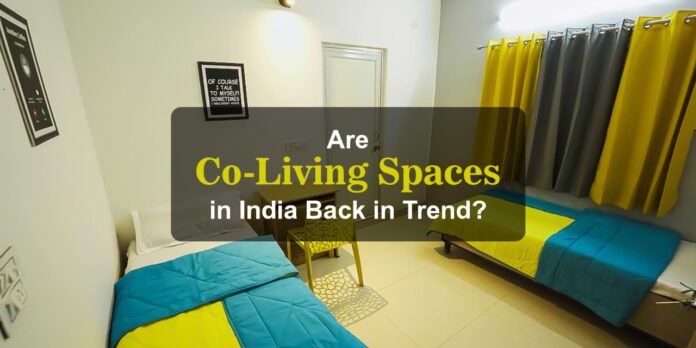Post-Covid, life is coming back to normal and the work from office culture is gaining momentum, hence professionals living away from their homes are opting for Co-living Spaces. The main reason behind this surge is rise in rental pays of regular rented house.
The recent report by Collier’s shows that the Future of Co-living Spaces in India is likely to increase by two-folds. In 2021, India had 2, 10,000 beds, and this figure is estimated to touch 4.50.000 beds in India by 2024.
A real estate expert said that 2019 witnessed an addition of 70,000+ beds pan India. Although, the pandemic crashed the occupancy ratio to 30 percent in 2020 from that of 90 percent in 2019. After the Pandemic, work-from-office culture started evolving in 2021 and by the end of the year, the back-in-office concept gained tremendous momentum. It boosted providers of Co-living Spaces in India with confidence, and approximately 50,000 beds were added in 2021. Slow but steady growth took the figures above 65 percent at the end of 2021. The affordable rental rates with almost cost down by 15-30 percent is another reason why, Co-living Spaces in India are becoming favourite among tenants.
Reasons for Opting Co-Living Spaces in India as Preferred Housing Option
Difference between House Hunting
There are two types of people in the country. One segment is for married couples, and the second is for unmarried people. Each individual in these segments has realized the need for dedicated space. This realization boosted the demand for housing units in the post-pandemic era. However, unmarried people like bachelors, students, and working professionals, find it suitable to stay alone in the city. Hence, instead of paying a hefty rent for a house, such people find co-living spaces budget-friendly as these places offer privacy and have all amenities required to experience smart lifestyle. Interestingly, Co-living Spaces in India simplified the house hunting process like never before.
Not every person does house hunting for a family or to stay together. Some people prefer to live an independent life. Hence, it is not right to form an opinion that an increase in demand for housing units will adversely affect the business of Co-living Spaces in India.
More Amenities at Lesser Price
Renting a home or getting a room in the hostel comes with many restrictions like gate opening time, furniture, cook, limited visitors, utility bill payment, and more. However, Co-living Spaces in India take care of all these things as such places take care of all this.
The Co-living Spaces have a common reading room, TV area, gyms, yoga centres, and a gaming area for the residents. Also, you have to make a one-time payment every month at Co-Living Spaces in India for availing all facilities like room on rent, electricity bill, Wi-Fi, maintenance, housekeeping every alternate day, two cupboards with functional lockers, two study/work tables, and gas connection in the kitchen.
Understand it with an example. Sumeet and Raghav were looking for rented accommodation. The duo would have to pay Rs 25,000 for just the house (one BHK), with additional Rs. 8,000 individually for paying bills and other facilities. Also, they have to pay for logistics costs for transferring their belongings to the new address. After exploring many options, Co-living Spaces in India look like a feasible option for themselves.
Seamless Paperwork & Payment
Paperwork is often tedious when you rent a home in a traditional way that has a broker/agent as a middleman. But the technology advancement has eased the paperwork process as well. No middleman/agent/broker is involved when opting for Co-living Spaces anywhere in the country. Hence, you need not pay anything extra to the third party. Technology has simplified the paperwork and payment process. As of now, you just need to sign the leave and license agreement for the period of 3/6/ 12 months’ to avail Co-living Spaces in India.
However, some co-living service providers have a dedicated period of time often known as the lock-in period that makes it compulsory for you to reside in the facility. On violating this lock-in period, you have to pay some amount of money as fine.
Hence, do not forget to check rules with providers before occupying Co-living spaces in India.
Privacy and Security
The Co-living Spaces in India conduct a verification process to know where people belong from prior to offering space in their Co-living project. The service provider also keeps a check on preferences of the occupants. If occupants with same interest are residing in space, then they can switch together. The Co-living Spaces also ensure that your KYC (Know Your Customer) process is completed.
Conclusion
Housing hunting for tenants is a tiring process and with multiple restrictions regarding what to do and what not, sometimes makes you the tenant feel annoyed. Hence, it is ideal to occupy Co-living spaces in India as they are budget-friendly and offers a dedicated space to live, work, play, and relax.



